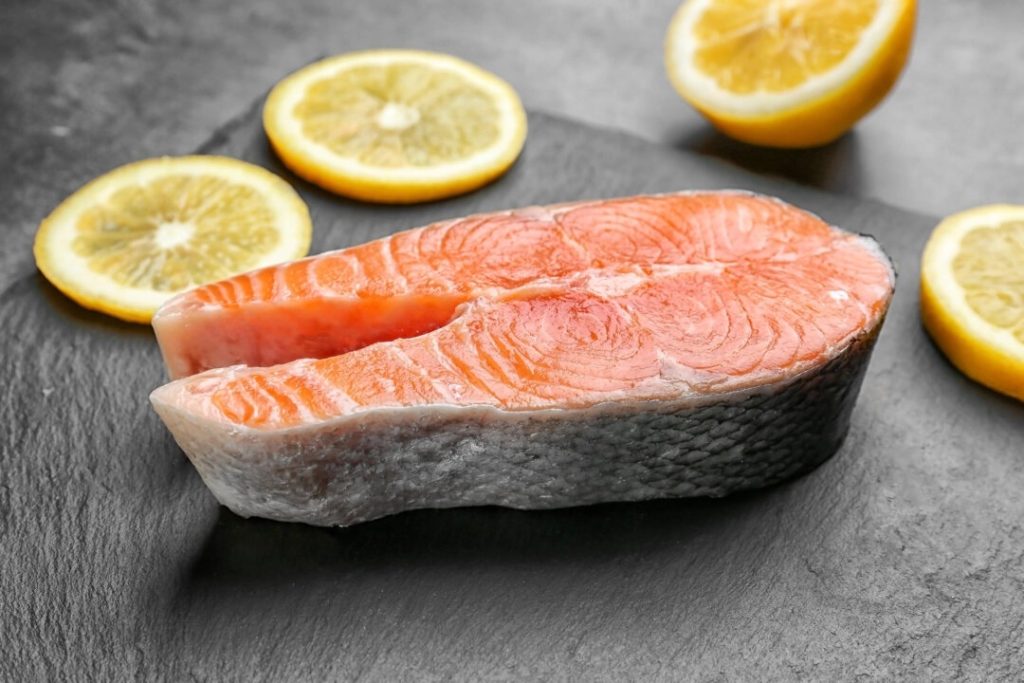Which fruit is best for asthma? here are five fruits.
Being familiar with the foods that should be avoided along with the foods that should be encouraged can be of great help in managing certain asthma symptoms, especially during the high seasonal periods

As fall approaches, the autumn and ragweed pollen season comes with it along a plethora of asthma patients who prepare themselves for months of cough and wheeze. But help may be nearer—tomatoes or certain other foods in the pantry could considerably ease the symptoms and help contain the onset of asthma attacks.
Asthma Triggers:
Asthma is one of the most prevalent chronic diseases in the world, affecting about 300 million of the population. The autumn season makes the lover of sunshine ill with seasonal exacerbations, as there are more allergy-inducing agents, cold weather, and flu. Allergic asthma triggers include pollen, mold, dust, animals and smoking as well as non-allergic triggers such as physical activity, emotions and climate.
These triggers lead to excessive mucus production, an inflammatory response, and sometimes airway obstruction making it harsh for a normal person to breathe. Wheezing is the most conspicuous end of this group of disorders, but asthma manifeste also as chronic cough which some would consider to be bronchitis. The causes of asthma are still not fully understood; however, factors such as inheritance, environment, and even ‘over cleanliness’ are thought to play a vital role.
Strength Taking Liquid Foods:
Five specific categories of foods have emerged as a potent barrier against Asthma attacks as they possess anti-inflammatory properties, immune-boosting capabilities, and are beneficial to the respiratory health at large.
- Fruits and Vegetables Seasoned with Vitamin C
Oranges, grapefruits, and kiwis belong to the group of citrus fruits, which are the most rich in vitamin C nutrition and even one of the most powerful antioxidants in the nature. High levels of vitamin C might protect the airways in some patients. The research evidence published in the Cochrane Database of Systematic Reviews can prove that those who tend to have a lower vitamin C proportion are more likely to people with a lung dysfunction. There are delicious dried apples and pears which have a lot of fiber, also full of polyphenols, might also enhance lung function by decreasing inflammation.
- Omega-3 Fatty Acids
Omega-3 fatty acids, which are sourced from fatty fish like salmon, mackerel, and sardines, have been known to lead to decrease in airway inflammation. A 2020 study published in Nutrients found associations of higher omega-3 intake with better control of asthma, lower doses of inhaled corticosteroid medications, and a decrease in systemic inflammation.
- Food Rich in Flavonoid
Antioxidants like flavonoids that coat berries, onions, garlic, dark chocolate and green tea, could also help reduce the severity of asthma attacks. An article published in the Journal of Clinical Biochemistry and Nutrition in January claimed that women with asthma eat more flavonoid-rich diet, showed better improvement of lung function and less asthma symptoms.
- Curcumin and Ginger
Both curcumin (mostly from turmeric) and ginger have strong anti-inflammation ingredients. Research reported in 2014 has shown that these ingredients help relieve respiratory tract swelling.
- Probiotics
Recent studies have suggested that the health status of the gut may modulate the immune and inflammatory status of an individual. One 2022 study concluded that ‘with the use of probiotic foods, asthma can be alleviated due to the normalization of the immune system and suppression of airway inflammation.’ Common probiotic food items are yogurt, kefir and fermented vegetables.
- Introduction: Sulfites and Asthma: important information.
Sulfites are food preservatives and can sometimes be dangerous for people who are steroid-dependent since they may induce asthma attacks.
The intake of sulfites may result to:
- An Asthma Attack.
- Allergic reactions such as wheezing, coughing, shortness of breath, sneezing, runny nose, and hives.
- Very eeny tiny percent of people may face Anaphylaxis (life catching allergic reaction).
Anaphylaxis symptoms include:
- Skin decolorization, probably red pale, etc.
- Fast heart beat about hundred something beats.
- Little headaches or big spinning headaches.
- Throat activity either tingling sore or feels hindered slightly.
- Wheezing or coughing or merely husky unclear tongue words.
There are several products that contain sulfites which include:
- Dried codfish; processed potato, dry sub shrimps or other dishes with shrimps in them;
- Pickle sauces, sweet sauces jam, and mix gravy.
- Soup powder mix, restaurant food, molasses too
- Wines, beers, ciders, and some vegetable, fruit juices and teas too
However, Schiff continued, sulfites do also exist in food that occurs naturally. The foods are:
- Salmon, maple syrup, cornstarch and dried cod fish;
- Lettuce, soy and tomatoes, eggs;
- Onion, garlic, leeks, chives and asparagus.
In cases of allergy to sulfites specifically, food products should be checked for sulphite free ingredients that are labeled and sodium bisulfite and sulfur dioxide must be avoided.
With the tough season setting in for people with asthma, making an effort to take a particular diet pattern with certain foods and avoiding other foods which are triggers may help. However, despite the fact that nutrition, especially, can never be a complete substitute for medication, such food inclusion is likely to help in alleviating symptoms to some extent. At this time when there is a high risk of respiratory illness, what one eats can be very helpful in controlling asthma.


